|
[1]
|
J. A. Pedras-Vasconcelos, The Immunogenicity of Therapeutic Proteins-What you Don't Know Can Hurt YOU and the Patient. SBIA REdI Fall, Ed.; U.S. Food and Drug Administration: Silver Spring, MD, USA, 2014. Available from: https://www.fda.gov/files/drugs/published/The-immunogenicity-of-therapeutic-proteins--what-you-don%E2%80%99t-know-can-hurt-YOU-and-the-patient--Fall-2014.pdf.
|
|
[2]
|
J. M. Carton, W. R. Strohl, Chapter 4-Protein therapeutics (introduction to biopharmaceuticals), Intro. Biol. Small Mole. Drug Rese. Develop., (2013), 127-159.
|
|
[3]
|
N. Chirmule, V. Jawa, B. Meibohm, Immunogenicity to therapeutic proteins: Impact on PK/PD and Efficacy, AAPS J., 14 (2012), 296-302. doi: 10.1208/s12248-012-9340-y

|
|
[4]
|
K. D. Ratanji, J. P. Derrick, R. J. Dearman, et al. Immunogenicity of therapeutic proteins: Influence of aggregation, J. Immunotoxicol, 11 (2014), 99-109. doi: 10.3109/1547691X.2013.821564

|
|
[5]
|
A. Kuriakose, N. Chirmule, P. Nair, Immunogenicity of biotherapeutics: Causes and association with posttranslational modifications, J. Immunol. Res., 2016 (2016), 1-18.
|
|
[6]
|
S. Tourdot, T. P. Hickling, Nonclinical immunogenicity risk assessment of therapeutic proteins, Bioanalysis, 11 (2019), 1631-1643. doi: 10.4155/bio-2018-0246

|
|
[7]
|
G. Shankar, S. Arkin, L. Cocea, et al. Assessment and reporting of the clinical immunogenicity of therapeutic proteins and peptides-harmonized terminology and tactical recommendations, AAPS J., 16 (2014), 658-673. doi: 10.1208/s12248-014-9599-2

|
|
[8]
|
B. Chen, J. Q. Dong, W. J. Pan, et al. Pharmacokinetics/pharmacodynamics model supported early drug development, Curr Pharm Biotechnol., 13 (2012), 1360-1375. doi: 10.2174/138920112800624436

|
|
[9]
|
A. Smith, H. Manoli, S. Jaw, et al. Unraveling the effect of immunogenicity on the PK/PD, efficacy, and safety of therapeutic proteins, J. Immunol. Res., 2016 (2016), 1-9.
|
|
[10]
|
W. H. Boehncke, N. C. Brembilla, Immunogenicity of biologic therapies: Causes and consequences, Exp. Rev. Clin. Immunol., 14 (2018), 513-523.
|
|
[11]
|
B. W. Neun, Y. Barenholz, J. Szebeni, et al. Understanding the Role of Anti-PEG Antibodies in the Complement Activation by Doxil in Vitro, Molecule, 23 (2018), 1700.
|
|
[12]
|
S. Kathman, T. M. Thway, L. Zhou, et al. Utility of a bayesian mathematical model to predict the impact of immunogenicity on pharmacokinetics of therapeutic proteins, AAPS J., 18 (2016), 424.
|
|
[13]
|
E. M. J. van Brummelen, W. Ros, G. Wolbink, et al. Antidrug antibody formation in oncology: Clinical relevance and challenges, Oncologist, 21 (2016), 1260-1268. doi: 10.1634/theoncologist.2016-0061

|
|
[14]
|
S. Gupta, S. R. Indelicato, V. Jethwa, et al. Recommendations for the design, optimization, and qualification of Cell-Based assays used for the detection of neutralizing antibody responses elicited to biologycal therapeutics, J. Immunol. Methods, 32 (2007), 1-18.
|
|
[15]
|
X. Chen, T. P. Hickling, P. Vicini, A mechanistic, multiscale mathematical model of immunogenicity for therapeutic proteins: Part 1-Theoretical model, CPT Pharmacometrics Syst. Pharmacol., 3 (2014), e133.
|
|
[16]
|
L. Hamuro, G. S. Tirucherai, S. M. Crawford, et al. Evaluating a multiscale mechanistic model of the immune system to predict human immunogenicity for a biotherapeutic in Phase 1, AAPS J., 21 (2019), 94.
|
|
[17]
|
G. I. Bell, Mathematical model of clonal selection and antibody production, J Theor Biol., 29 (1970), 191-232. doi: 10.1016/0022-5193(70)90019-6

|
|
[18]
|
H. Y. Lee, D. J. Topham, S. Y. Park, et al. Simulation and prediction of the adaptive immune response to influenza a virus infection, J. Virol., 83 (2009), 7151-7165. doi: 10.1128/JVI.00098-09

|
|
[19]
|
Z. H. Xu, H. Lee, T. Vu, et al. Populations pharmacokinetics of golimumab in patients with anklosing spondylitis: Impact of body weight and immunogenicity, Int J Clin Pharmacol Ther., 48 (2010), 596-607. doi: 10.5414/CPP48596

|
|
[20]
|
P. L. Bonate, C. Sung, K. Welch, et al. Conditional modeling of antibody titers using A Zero-Inflated poisson random effect model: Application to fabrazyme, J Pharmacokinet Phar., 35 (2009), 449-459.
|
|
[21]
|
X. Chen, T. P. Hickling, E. Kraynov, et al. A mathematical model of the effect of immunogenicity on therapeutic protein pharmacokinetics, AAPS J., 15 (2013), 1141-1154. doi: 10.1208/s12248-013-9517-z

|
|
[22]
|
J. Foote, C. Milstein, Kinetic maturation of an immune response, Nature, 352 (1991), 530-532. doi: 10.1038/352530a0

|
|
[23]
|
B. S. Alexandra, N. Radhika, H. Paul, Novel Approaches and Strategies for Biologics, Vaccines and Cancer Therapies, Chapter 9-Biobetter Biologics, New York: Academic Press, (2015), 199-217.
|
|
[24]
|
Pacific Immunology, Learning Center: Antibody Affinity and Affinity Maturation, 2020., Available from: https://www.pacificimmunology.com/resources/antibody-introduction/antibody-affinity-and-affinity-maturation/.
|
|
[25]
|
S. Yi, P. W. Nelson, A. G. Ulsoy, Time-delay sistems: Analysis and control using the Lambert W function, World Scientific, Singapore, 2010.
|
|
[26]
|
Kasbawati, A. Y. Gunawan, R. Hertadi, et al. Effects of time delay on the dynamics of a kinetic model of a microbial fermentation process, ANZIAM J., 55 (2014), 336-356.
|
|
[27]
|
J. D. Murray, (1990) Mathematical biology, 2Eds., New York: Springer.
|
|
[28]
|
L. F. Shampine, S. Thompson, Solving DDEs in MATLAB, Appl. Numer. Math. 37 (2001), 441-458. doi: 10.1016/S0168-9274(00)00055-6

|











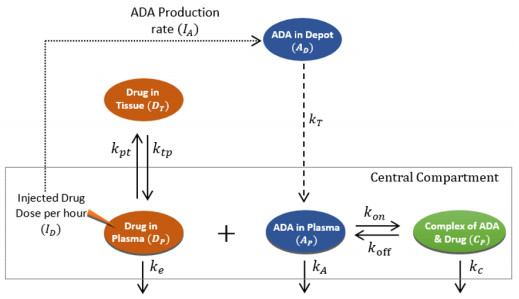
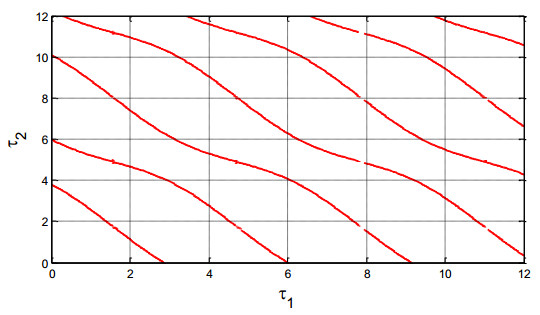
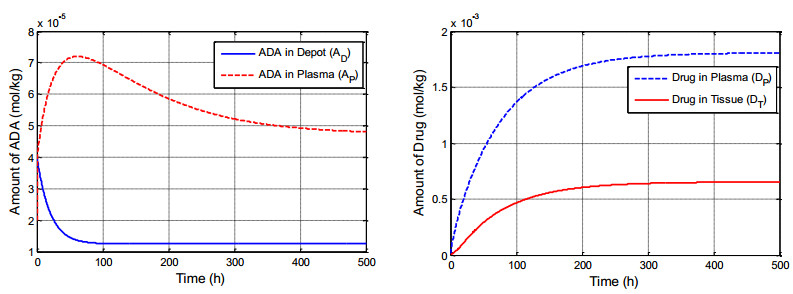
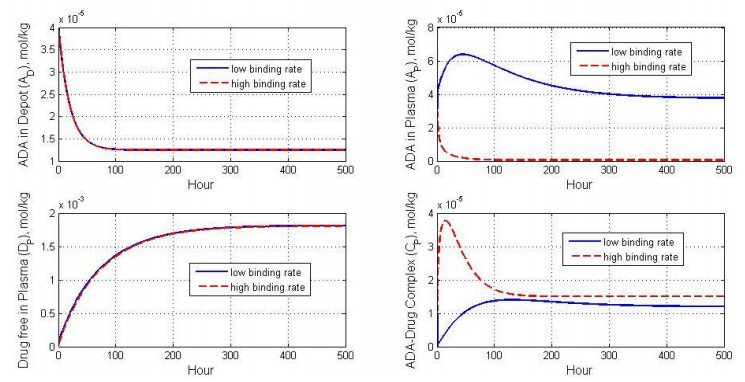
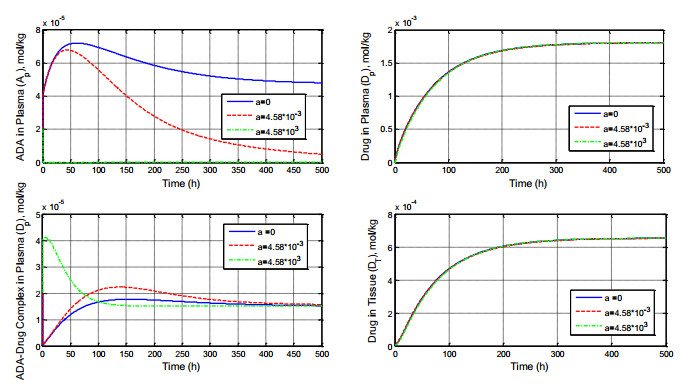
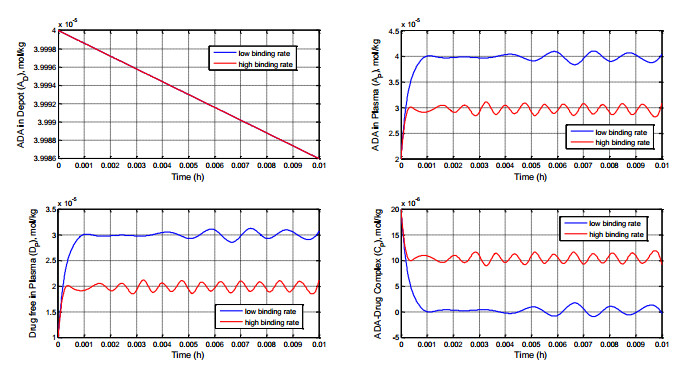
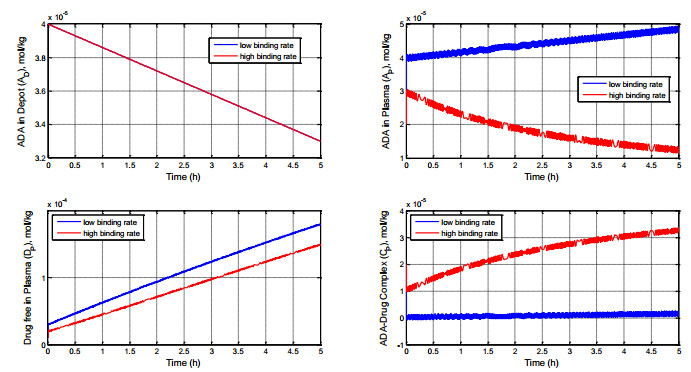
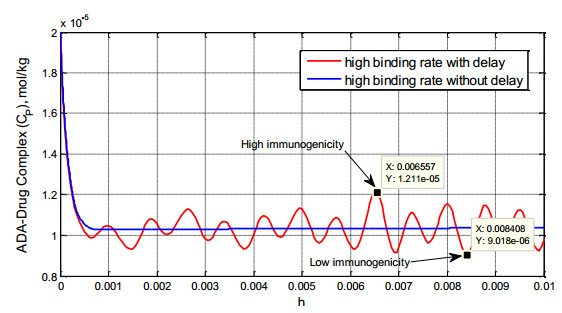


 DownLoad:
DownLoad: